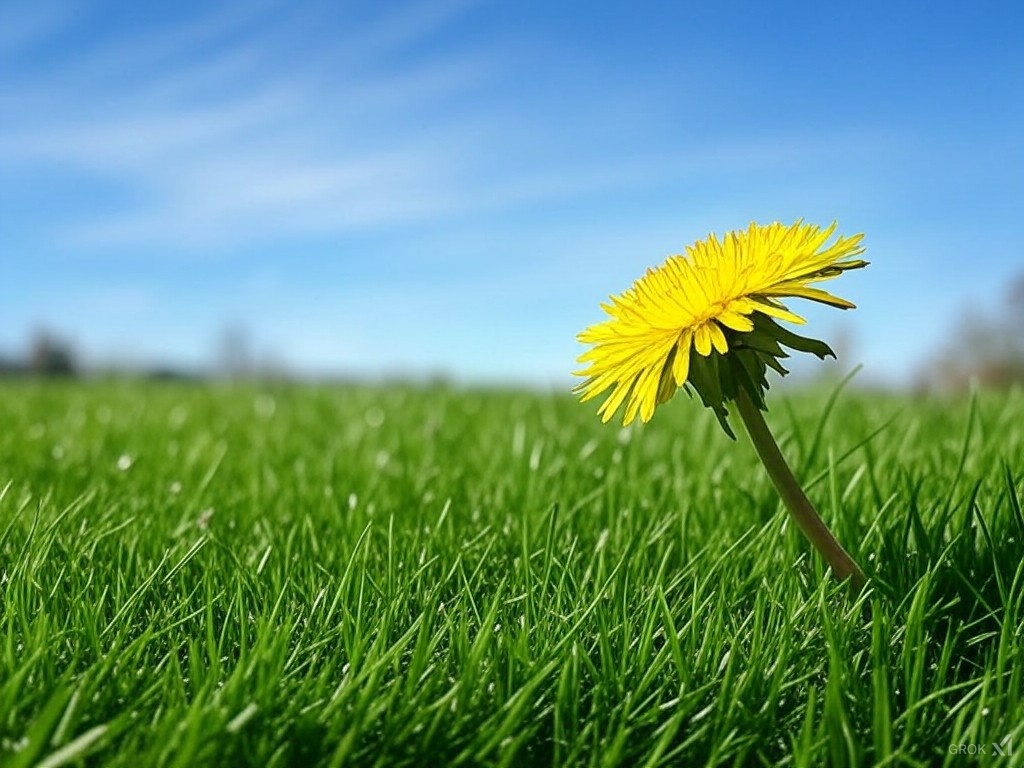Introduction:
We’ve been sold a dream of the perfect lawn – lush, green, and weed-free. But what if this dream is, in reality, a nightmare for our environment, our health, and our communities? Let’s peel back the layers of this green facade to reveal the unintended consequences of our conventional lawn care practices.
The Chemical Cocktail:
Every time we fertilize or spray our lawns with chemicals, we’re not just treating the grass; we’re engaging in a form of environmental roulette. These substances, designed to promote growth or kill unwanted plants and pests, come with a host of unintended side effects:
- Pet Health: Our pets are innocent victims in this chemical war. They roll, play, and even eat grass, unknowingly ingesting these toxins. With cancer rates among pets on the rise, we must consider if our quest for the perfect lawn is inadvertently poisoning our furry friends.
- Human Exposure: Neighbors or passersby, especially children and those with pets, walk across our lawns without knowing what’s been applied. The off-gassing of chemicals can also lead to inhalation of harmful substances, potentially causing respiratory issues or skin irritations.
Environmental Impact:
The repercussions extend far beyond our property lines:
- Runoff and Waterways: When it rains, these chemicals don’t just stay on our lawns. They wash off, entering storm drains and eventually polluting rivers, lakes, and oceans. This can lead to algal blooms, dead zones in water bodies, and the decline of aquatic life.
- Soil Degradation: Overuse of synthetic fertilizers disrupts soil biology, killing off beneficial microbes and creating a dependency cycle where more and more chemicals are needed to maintain lawn health.
- Wildlife: The chemicals we use are indiscriminate killers, not just targeting pests but also impacting beneficial insects like bees and butterflies, leading to a decline in pollinators and biodiversity.
Gaseous Emissions and Beyond:
The application of lawn care chemicals isn’t just a matter of direct contact; there’s also the issue of gaseous emissions:
- Volatile Organic Compounds (VOCs): Many lawn care products release VOCs, contributing to air pollution and potentially affecting air quality in our neighborhoods.
- Drift: Even when applied correctly, chemicals can drift, affecting neighboring gardens, vegetable plots, or even entering homes through open windows.
The Community Effect:
Our pursuit of lawn perfection has social implications:
- Community Health: We’re all interconnected in our neighborhoods. The health of one lawn, treated with chemicals, can affect the health of the entire community through shared air, water, and soil.
- Social Pressure: There’s a psychological toll as well. The pressure to conform to an aesthetic standard can lead to unnecessary chemical use, driven by fear of social judgment rather than genuine need.
The Path Forward:
It’s time for a paradigm shift:
- Regenerative Practices: Moving towards methods that work with nature, like composting, cover cropping, and using microbial inoculants, can heal our lawns and environments.
- Awareness and Education: We need to educate ourselves and our communities about the true cost of conventional lawn care. Knowledge is the first step toward change.
- Legislation and Policy: Advocating for stricter regulations on lawn care chemicals or supporting initiatives like “No Mow May” can foster more sustainable practices at a community level.
- Personal Responsibility: Every homeowner can start by questioning the need for chemicals. Is that dandelion really a threat, or a sign of life?

Conclusion:
The unintended consequences of our chemical lawn care habits are far-reaching, affecting everything from our pets’ health to the integrity of our planet’s ecosystems. It’s not just about having a beautiful lawn; it’s about ensuring that beauty doesn’t come at the cost of our health, our community, and our environment. Let’s pledge to be stewards, not just of our lawns but of the broader world around us.
By embracing regenerative practices, we can achieve a lawn that’s not only beautiful but also beneficial, creating spaces where life in all its forms can thrive. The journey from conventional to regenerative lawn care is a path of learning, unlearning, and ultimately, reconnecting with nature in a way that honors both our immediate desires and our collective future.